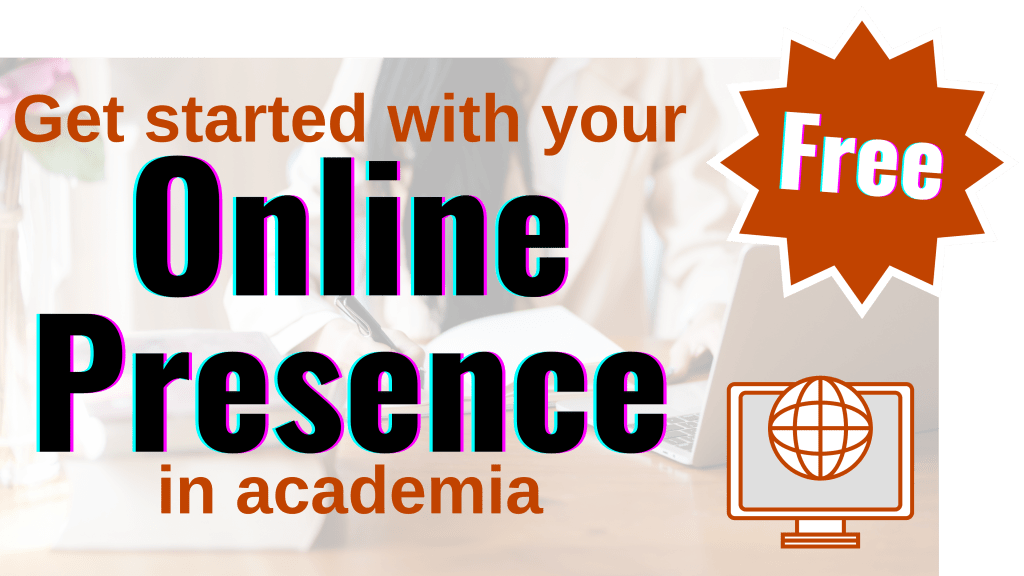What Is Your Digital Footprint?
Professors, researchers and scientists like you decide to start managing your online presence for many reasons.
Managing your online presence in academia is all about these three things:
- You have to know what’s out there about you for people to find.
- You need to know where people are looking for information about you and your work.
- Where to focus your energy to meet your goals.
Subscribe to The Social Academic blog.
The form above subscribes you to new posts published on The Social Academic blog.
Want emails from Jennifer about building your online presence? Subscribe to her email list.
Looking for the podcast? Subscribe on Spotify.
Prefer to watch videos? Subscribe on YouTube.
1. Know what’s out there about you

You need to know what’s already out there about you. For some of you, that’s quite a bit of information. Start with search engines like Google. If you Google yourself, you may see things like
- Your faculty profile
- Your articles and publications
- Mentions in news articles
- University-related blog posts and website pages
- Society newsletters
- Event listings
You may also see things like your public social media accounts.
And your personal website if you have one.
You may also see none of these things. Some people don’t have an online presence.
Someone Googling your name is looking for info about you. They may be looking for different types of information, but in general people want basic things like a
- short bio
- photo of you
- brief description of what you do
- and, contact info
Colleagues and people in your field may be looking for more specialized information like your
- publications
- speaking engagements
But in general, people are looking for a bit about you. And they’re willing to spend time to find it.
The 1st step is finding out what people can learn about you already by Googling yourself.
2. Where are people looking for info about you?

The 1st place most people will look for info about you is Google. But it’s not the only place. People like your colleagues, students, and other researchers may look at your faculty profile to learn more.
Some people are looking for you on LinkedIn, or on a research-specific networking site. Others want to connect with your conversations on Twitter.
Ask yourself these questions to determine where your potential audience is spending time.
- Who in the past 6 months may have needed to look me up?
- Am I anticipating anyone new who needs to learn about me in the near future (i.e. hiring managers)?
- Where do my friends/colleagues spend their time online?
- How do people in my field usually stay up-to-date on new research?
- How are other people in my field managing their online presence? Do they have websites? Social media accounts? Research-based networking profiles?
Thinking through these questions does not mean you need to take action on each of these things. But being aware of the answers does set you up to make a more informed choice of where to focus your energy.
3. Social media, websites, and more

Online content that helps share who you are and what you do is the best way to manage your online presence. Your digital footprint is most easily controlled with a personal website. You can also share content on like social media.
Content that you share might include
- text
- images
- GIFs
- video
- links
With social media you can post content whenever you want, like when you have a new article or publication. But a personal academic website is the best way to control your digital footprint long-term.
You can also share more permanent content like an article on LinkedIn, a blog post for your department, or a video on your university’s YouTube account. There are many options to choose from.
Start here! My free training walks you through where to focus your energy 1st.
Virtual. Self-paced. Choose your own adventure.
Free online presence workshop
Guides and Advice Articles Online Presence How To's Resources for Grad Students Share Your Research
Jennifer van Alstyne View All →
Jennifer van Alstyne is a Peruvian-American poet and communications consultant. She founded The Academic Designer LLC to help professors build a strong online presence for their research, teaching, and leadership. Jennifer’s goal is to help people feel confident sharing their work with the world.
Jennifer’s personal website
https://jennifervanalstyne
The Academic Designer LLC
https://theacademicdesigner.com

